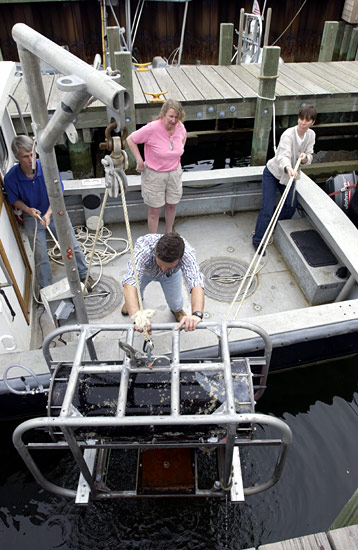Novel Instrument Sheds Light on Plankton Populations in Coastal Waters
Cabled ocean observatories, like the Martha’s Vineyard Coastal Observatory (MVCO), and new sensors like the Flow Cytobot are enabling scientists to study plankton community structure and processes with unprecedented detail. MVCO is connected to shore by a fiber optic cable that provides unlimited power and data transmission capabilities 24/7 and allows scientists to plug in various instruments or sensors. One of the MVCO sensors is the Flow Cytobot, an automated flow cytometer that makes continuous measurements of plankton size, abundance and other characteristics, and takes video images of organisms for identification. It can be reprogrammed from remote locations, such as a lab ashore, to respond to changing conditions. Scientists can monitor seasonal changes in populations and growth rates of specific populations, important to understanding such phenomena as harmful algal blooms.
OS42A-04 A New Submersible Imaging-in-Flow Instrument to Monitor Nano-and Microplankton: Imaging Flow Cytobot
